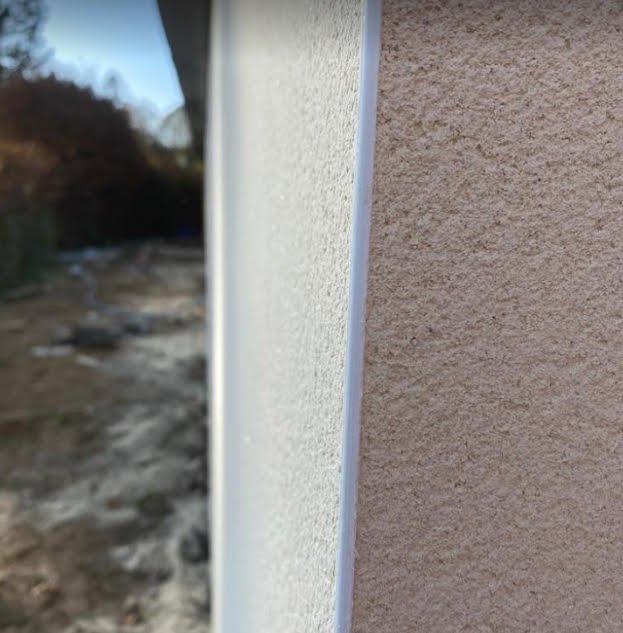
Rendering
Looking for top-notch rendering services in Norwich, Norfolk, or throughout East Anglia?
Look no further!
Our skilled craftsmen specialise in rendering, delivering flawless finishes that enhance the beauty and durability of your property.
From traditional cement to modern render coatings, we offer a wide range of options to suit your needs. Our expertise ensures precision and longevity, guaranteeing surfaces that withstand the test of time and weather.
Whether you're in Norwich, Norfolk, or anywhere in East Anglia, our personalised service caters to your unique preferences.
Contact us today to transform your space with expert rendering services!
Our Comprehensive Guide to Rendering: What It Is, How It Works, Its Benefits and Drawbacks
Rendering is a crucial technique used in construction and home improvement to protect and enhance the exterior and interior walls of buildings. This guide will provide you with an in-depth understanding of rendering, how it bonds to walls, why it is used, and its benefits and drawbacks.
What Is Rendering?
Rendering is the process of applying a coat of cement, lime, acrylic, or other types of render to the exterior or interior surfaces of buildings. This coating provides a smooth or textured finish that enhances the appearance and durability of the walls. Different types of render include cement render, lime render, acrylic render, and polymer-modified render, each with unique properties and applications.
How Rendering Bonds to the Wall
The bonding process of rendering to walls involves both mechanical and chemical adhesion. Here's a step-by-step look at how it works:
Surface Preparation: The wall surface must be clean, free of dust, and dampened before applying the render. In some cases, a primer or bonding agent is applied to improve adhesion.
Application: The render is applied in one or more layers. The first layer, known as the base coat, is key for bonding and is often roughened to provide a good grip for subsequent layers.
Setting and Hardening: As the render dries, it undergoes a chemical reaction (hydration in cement-based renders and carbonation in lime-based renders), which causes it to harden. The mechanical bond is achieved by the render gripping onto the rough surface of the wall.
Finishing: Additional layers are applied to achieve the desired thickness and finish. The final coat is smoothed or textured, depending on the desired aesthetic effect.
Why People Get Rendering Done
Rendering is chosen for various reasons, including protection, aesthetics, and insulation. Here are a few key reasons:
Protective Barrier: Rendering acts as a protective barrier against weather elements, preventing moisture ingress and reducing the risk of structural damage.
Aesthetic Appeal: Render can be textured or coloured to create a wide range of finishes, from smooth and modern to rustic and traditional. It significantly enhances the kerb appeal of a building.
Insulation: Some renders, particularly polymer-modified and acrylic renders, offer improved thermal insulation, contributing to energy efficiency.
Repair and Renovation: Rendering is often used to repair and rejuvenate old or damaged walls, providing a fresh and updated look.
How Rendering Is Used to Repair Walls and Cracks
Rendering is an effective method for repairing walls and fixing cracks. Here's how it’s done:
Preparation: The area around the crack or damaged section is cleaned to remove loose material and dust. For deeper cracks, the crack might be widened slightly to ensure the render can fill it properly.
Applying the Render: A bonding agent is often applied to the area to improve adhesion. Render is then carefully applied in layers. For small cracks, a single coat might suffice, but larger repairs typically require multiple layers.
Layering: Each layer of render must be allowed to set before the next one is applied. The first layer fills the depth of the crack or hole, while subsequent layers build up the surface to match the surrounding wall.
Finishing: Once the render has filled the crack and is level with the surrounding wall, the final layer is smoothed out. This might involve sanding once the render is dry to ensure a seamless finish.
Painting: After the render has fully dried and cured, the repaired area can be painted to match the rest of the wall, making the repair virtually invisible.
Benefits of Rendering
Weather Protection: Render provides a robust protective layer against rain, wind, and other weather conditions, helping to prevent moisture penetration and structural damage.
Aesthetic Enhancement: Rendering can transform the look of a building, offering a wide variety of finishes and colours to suit different architectural styles.
Thermal Insulation: Certain types of render can improve the thermal efficiency of a building, contributing to energy savings and enhanced comfort.
Durability: Properly applied render is long-lasting and resistant to cracking, peeling, and other forms of deterioration.
Maintenance: Rendered walls are generally easier to maintain and clean compared to bare brick or stone surfaces.
Drawbacks of Rendering
Cost: Rendering can be expensive, especially when high-quality materials or specialised finishes are used.
Application Time: The process can be time-consuming, particularly for multi-layer systems that require drying time between coats.
Skill Requirement: Achieving a high-quality finish requires a skilled tradesperson. Poor application can lead to problems like cracking and poor adhesion.
Potential for Cracks: While durable, render can develop cracks over time, particularly in areas with significant temperature fluctuations or ground movement.
Conclusion
Rendering is a valuable technique in construction and renovation, offering numerous benefits from enhanced protection and aesthetics to improved thermal insulation. While it comes with some drawbacks, particularly in terms of cost and potential for cracking, the advantages often outweigh the disadvantages, making it a popular choice for many property owners. Whether you’re looking to protect your building from the elements, improve its appearance, or repair damaged walls, rendering is a reliable and effective solution.
By understanding the intricacies of rendering, you can make informed decisions about your next home improvement project, ensuring a result that is both beautiful and enduring.
We Cover…




